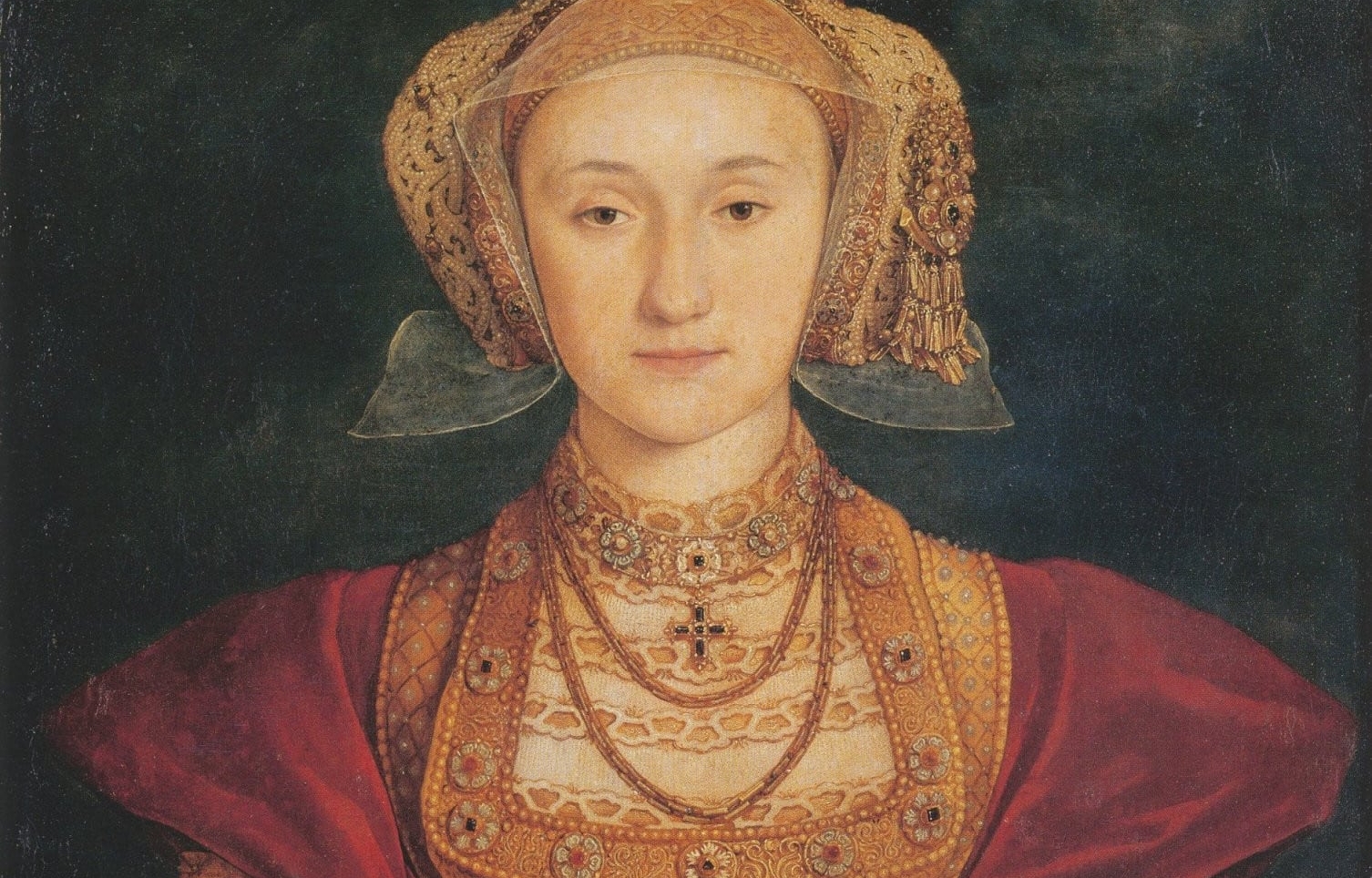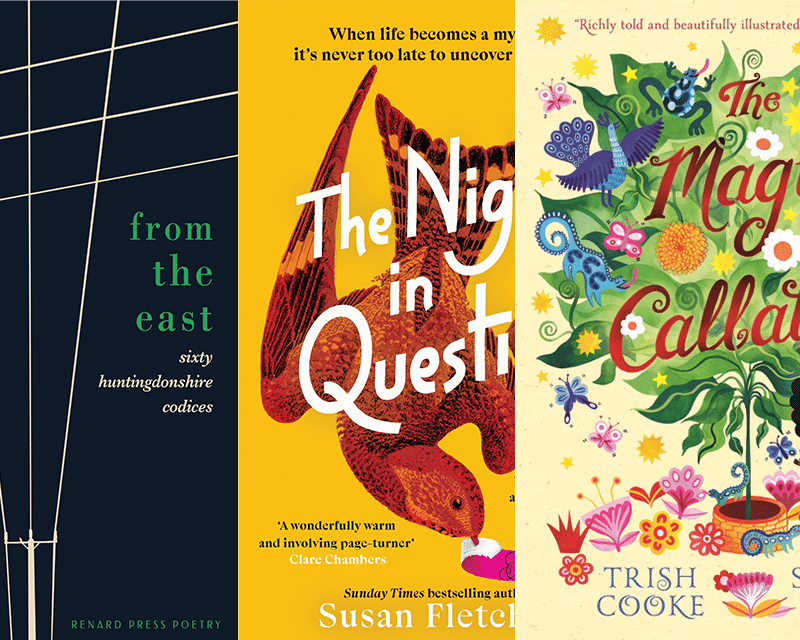- Collected
- Article
The Six Lives
The enduring fascination of the six wives of Henry VIII.

- 1 July, 2019
- Susan Fletcher
It’s 1992. We’re in the classroom of an all-girls school, in a Midlands town. It is a history classroom; the walls are decorated with felt-tipped artwork depicting various historical events: the dissolution of the monasteries, the Tolpuddle martyrs, the impact of the Enclosure Act, the fall of the Berlin Wall. The windows overlook a hockey pitch. There is a smell of chalk and Impulse body spray — and it must be nearly Christmas, for there are paper snowflakes glued onto the windowpanes. We’re dressed in our school uniform which is, largely, maroon.
I was thirteen years old that day; nearly three decades have passed — yet I still see it with precision. I know which desk I was sitting in, who was beside me. And I know that until that specific lesson, I had neither loved nor hated history. It had been a beige, unexceptional subject: not a golden fifty minutes, nor a lesson to dread. But I had, at least, come to love my history teacher. We all had: Mrs Morris gesticulated, exclaimed, called out our names operatically and would turn on her heel with such emphasis that her skirts would flare out. She was wide-eyed, thrilled by history – can you imagine it? – and because we loved Mrs Morris, we wanted to be thrilled by it, also. We, too, wanted our skirts to flare out.
Yet, so far, we had not been thrilled. It was hard to be: history seemed so male to us. For all Mrs Morris’s vibrancy and outspread arms, it had been mostly men’s names that we’d written down in our exercise books: Jethro Tull with his seed drill, warty Oliver Cromwell, the bearded members of the gunpowder plot. And these men had been similar — ambitious, warmongering or inventive, and far older than we could relate to. Where, we’d ask plaintively, are the women? Why aren’t we writing down women’s names? For aside from a few exceptional queens, there had been none. If any other female had been mentioned in that classroom, it had been because she’d been a wife, daughter or the mother of men – not because of her own self – and we didn’t like this unfairness. (Ours was an all-girls school, after all.) Mrs Morris shared our frustrations; she did her best to explain. Yet this maleness had prevented me, so far, from real proper engagements in history lessons. I played the recorder, collected flavoured lip balms and read Judy Blume novels: how could I relate to the New Model Army or a king with gout? How could I be thrilled by a world that seemed so steadfastly male?
But that day – that afternoon, to be precise, for I remember the winter light was fading – changed me. We were expecting a lesson on the early Tudors. But Mrs Morris dismissed Henry VIII; she set him to one side, handed out six pieces of paper — and, like this, his wives entered the room. By holding these coloured photocopies of their portraits, we met them — with their pearl-buttoned gloves, brocade, small chins and tight, secretive mouths. And it was an extraordinary moment: there were no men in this classroom. Rather, there were six different, smart, complicated women with various accents whose fates (we learned) could be sung out, chirpily — divorced, beheaded, died, divorced, beheaded, died. They met our gaze, daring us. And whilst there’s no doubt we looked a little longer at the portraits of the wives who lost their heads (even now, I glance at that frail, white neck of Anne Boleyn, beneath her golden pendant of B), it was not their deaths that we were most captured by. We heard of their homelands and families. Of their ambitions, their cunning, their temerity or appetite. Their talents or errors, their nervousness. Their bewitching of the King. Their children or lack of them — and their sense of God.
Each wife seemed different from the first. Katherine of Aragon was elegant, educated, much-maligned; Anne Boleyn (a name we felt familiar with, for we already knew of her red-headed daughter) was reputedly magnetic, scheming, astute, too bold; Jane Seymour was dutiful, and, perhaps, the least tangible to us – dying from childbirth to leave a sickly heir; Anne of Cleves was the rejected, humiliated wife who spoke no English and was compared to a horse; Catherine Howard, it seemed, played the coquette, recklessly (and was still in her teens, at her death); and Catherine Parr appeared to be the epitome of patience, nursing a swollen, furious King and mediating between his two daughters before, at last, surviving him. We were enraptured by these women — and so full of questions for Mrs Morris that afternoon that we didn’t even raise our hands: we blurted questions out, spoke over each other — because those women didn’t feel dead at all. They were women of power, intellect, intent; they gave birth to women — queens, not kings. They rose up out of those photocopied portraits and sat with us, overlooking the hockey field — defying men, defying rules, defying religion. There had not been anyone like them before. Can you imagine it? The weight of their clothes on their shoulders? Their footsteps on the scaffold stairs? Their wish for more? Yes, we could.
Moreover, our homework felt like a gift. We were to choose one wife and to write a fictional diary account; it could come from any point in her life. In the last minutes of class, we clamoured for our preferred queen; we recognised who we liked the most or sympathised with — who we wished to be. Most of my friends chose Anne Boleyn. They wanted to write about the eve of her execution — and I understood why. She’d enraptured a king, birthed a future queen — and a new religion had been created for her sake. But instinctively, I favoured the second, plainer Anne. No one else claimed her — yet I felt sad at Anne of Cleves’ loneliness in England; I felt outraged at Henry’s rejection of her, at her humiliation and at the nickname that followed. I wanted a good ending for Anne — and justice. So that evening, I rushed to the kitchen table, opened my exercise book and wrote of my ordinary reflection, of my longing for Germany. I kept in mind her Holbein portrait and described my rust-coloured dress.
I’ve loved these six women ever since. I frequently visit them in the National Portrait Gallery and wish they could answer my questions — about bedchambers or courtly life or the king’s ulcerated leg. I’ve read countless biographies of them. Also, some of our greatest historical fiction writers have approached these women – from Alison Weir to Phillippa Gregory to Hilary Mantel – and I’ve devoured their novels, sought more. I am not alone in loving these queens; five hundred years later, and public fascination with these wives is no less. Why? Why are they so alluring? Why – even when there is, surely, nothing new to uncover about them – are we still engrossed? I wonder if my reaction to them in Mrs Morris’s classroom is a universal one, that in the patriarchal, historical world, they are extraordinary. They are dazzling, in that darkness: smart, challenging, unexpected — and intensely feminine.
But I wonder if, most of all, we are fascinated with Henry’s six wives because, unusually, they understood both their power and precariousness; they were not on the physical battlefield but they were at the heart of other, private wars. They induced a schism; they frustrated a king with their intellect and sexual allure; they were endangered, extraordinary — and real. And two of them lost their wars in the most final, bloodiest way — but others, perhaps, won.
My love of history was born that day. Yet I look back at that homework and understand that something else was made. The novelist in me stirred, at that kitchen table: I relished the first-person narrative, loved the historical setting, delighted in writing as Anne of Cleves who was arguably the most marginalised wife, the most exciting to me. I am the same, twenty-seven years later. My preference, as a writer, is a first-person narrator; my protagonists are frequently the outsider — a female who is different, judged, solitary and who has, by consequence, a fiery inner strength. I love tales of endurance. I love an ending of justice, an emergence into the light. And I love the fact that of all Henry’s queens, Anne of Cleves was the most admired by others; in 1553, she even shared a carriage with Elizabeth during Mary’s coronation in return for her decency, the King called her his ‘beloved sister.’ Also, Anne outlived both Henry and the other five wives. And I love that she was the only wife to be buried in Westminster Abbey — with Queen of England on her tomb. The Flanders Mare? Anne had her justice. As is so often the way, the best stories are found in life.
You might also like:
No facts, only versions
Memoirs are as much about what is excluded as what is included. This edition examines how you can evoke the…
RLF Fellows’ News: April 2024
Publishing News RLF Fellow Trish Cooke’s new children’s book, The Magic Callaloo, is set to be published by Walker Books…
Susan Fletcher on outsiders in fiction – literal and imagined
I’ve always known that I’ve preferred to be outside. To be an outsider – literally, and, specifically, amongst wild places…


